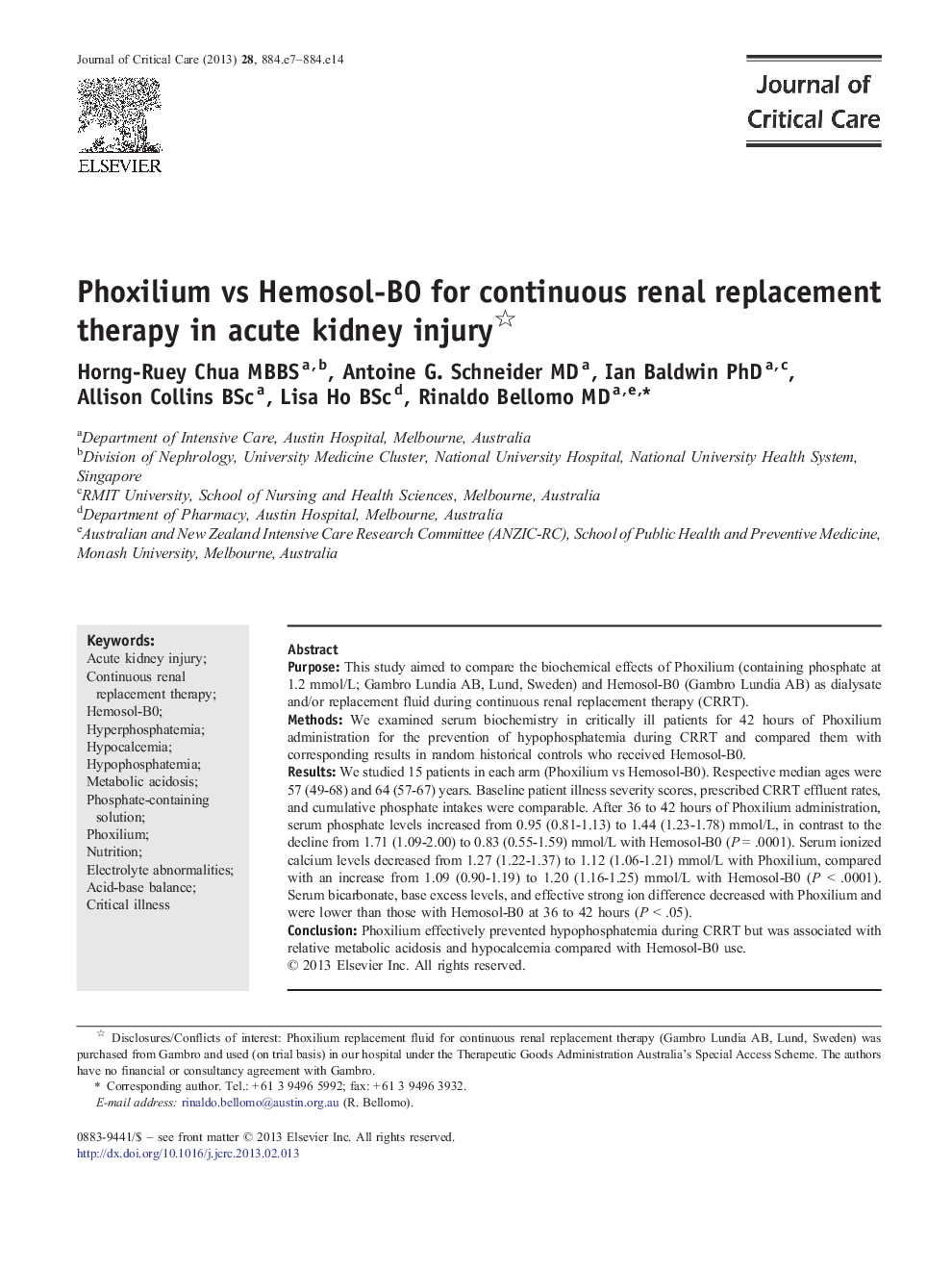| Article ID | Journal | Published Year | Pages | File Type |
|---|---|---|---|---|
| 5885943 | Journal of Critical Care | 2013 | 8 Pages |
PurposeThis study aimed to compare the biochemical effects of Phoxilium (containing phosphate at 1.2 mmol/L; Gambro Lundia AB, Lund, Sweden) and Hemosol-B0 (Gambro Lundia AB) as dialysate and/or replacement fluid during continuous renal replacement therapy (CRRT).MethodsWe examined serum biochemistry in critically ill patients for 42 hours of Phoxilium administration for the prevention of hypophosphatemia during CRRT and compared them with corresponding results in random historical controls who received Hemosol-B0.ResultsWe studied 15 patients in each arm (Phoxilium vs Hemosol-B0). Respective median ages were 57 (49-68) and 64 (57-67) years. Baseline patient illness severity scores, prescribed CRRT effluent rates, and cumulative phosphate intakes were comparable. After 36 to 42 hours of Phoxilium administration, serum phosphate levels increased from 0.95 (0.81-1.13) to 1.44 (1.23-1.78) mmol/L, in contrast to the decline from 1.71 (1.09-2.00) to 0.83 (0.55-1.59) mmol/L with Hemosol-B0 (P = .0001). Serum ionized calcium levels decreased from 1.27 (1.22-1.37) to 1.12 (1.06-1.21) mmol/L with Phoxilium, compared with an increase from 1.09 (0.90-1.19) to 1.20 (1.16-1.25) mmol/L with Hemosol-B0 (P < .0001). Serum bicarbonate, base excess levels, and effective strong ion difference decreased with Phoxilium and were lower than those with Hemosol-B0 at 36 to 42 hours (P < .05).ConclusionPhoxilium effectively prevented hypophosphatemia during CRRT but was associated with relative metabolic acidosis and hypocalcemia compared with Hemosol-B0 use.
